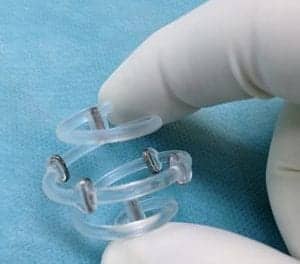Five ways to make your Web site a better sales tool

Sacrilege! How can you market your business if you don’t know which marketing initiatives are bringing in business?
It’s important to know what percentage of your new patients are:
• blown away by your gorgeous online ads;
• mesmerized by your Web site, which they found through a Google search;
• referred by a friend or physician; or
• referred by a Web portal.
Without proper tracking, you’re consigned to:
• blindly deploying all of your online initiatives simultaneously, but you can’t keep this up for long, because banner ads, portals and other online referral sources are expensive; or
• making monthly or seasonal changes with zero guidance, but this kind of hit-or-miss thinking is unworthy of a wise businessperson.
Both are guesswork strategies. Nobody’s in the driver’s seat; nobody’s steering the ship. I’m going to guess that you, as a surgeon, like having a sense of control over things. How can you stand this insecurity?
You Can Stand It, but I Can’t
This groping in the dark may be tolerable to you, but it drives me crazy. I live or die by the results I provide for my clients, all of whom are aesthetic physicians. If I bring in lots of new business, I’m a hero. If I don’t show them results, I’m a bloodsucker.
|
That’s why I want more aesthetic physicians to track their online results. It’s incredibly easy to set up online tracking. It’s a slam-dunk. You can automate it so that it doesn’t require any human effort once you’ve done the setup phase.
Follow these guidelines, and you’ll be able to track the business you get from the Internet. The numbers will help you make better choices about which campaigns you should expand and which ones you should eliminate.
1) Use a Web analytics tool to monitor your Web visitors. There is no need to break the bank. You can get an adequate Web-site tracking tool for less than $50 per month.
This handy tool will tell you how many unique visitors your Web site gets every month, which Web sites are referring them, and how many of them reach your “contact us” page. When you find a referral source that results in a lot of “contact us” visits, you’re onto something valuable. That lead-generation source is doing its job.
If you use a hosted tool that requires you to place hidden code on your Web site, be sure to place it at the top of each of your pages so that it is the first item to download. If you place it anywhere but the top, you will miss many of your visitors.
2) Use tagged URLs. Also known as tracking URLs, tagged URLs provide a more accurate way to identify where your visitors are coming from (based on which page of your Web site they enter from). This will assist you in determining more precisely the number of visitors you receive from:
• your online ads;
• the portals you subscribe to;
• Google searches;
• other search-engine searches;
• your e-newsletter; and
• publicity stored on newspaper and trade-magazine Web sites.
3) Highlight your “contact us” page. Make it as easy as possible for someone to know how to reach you at any point during a Web site visit. Be sure your “contact us” page is easy to find—on the top of every single page in your site.
If you have an online contact form, keep it short. Long forms turn people off. They’ll wander off if you give them too much work to do. There is no need to ask visitors what Web site they used to find you. Your Web logs will tell you the referring Web site of each visitor who submits information.
4) Determine which visitors become leads. Compare the number of people who visit your site to the number that view your “contact us” page. Now you know how many visitors become leads.
5) Cultivate your leads. Not every inquiry that comes in is ready to book a procedure immediately. In fact, most are just in the research phase. They’re canvassing possibilities, comparing before-and-after photos, perhaps just fantasizing for the moment. You are probably one among a list of surgeons they are looking at.
The only way to capture these leads when they become “warm” prospects, on the cusp of booking a procedure, is to maintain contact with them. You want to be top-of-mind when they’re ready. This involves a proactive step that’s easily accomplished over the Internet.
E-newsletters are great for this, as are auto responders. Both keep prospects in your loop with repeated contacts. Both require little or no effort on your part. Like soup cooking on the back burner, they do their work slowly, gradually bringing the prospect into the right frame of mind for buying. This happens while you’re doing other things—like servicing the patients you already have.
However you cultivate your leads, make sure your messages show professionalism and a sincere interest in helping the prospect. Done right, follow-up e-mails can win over new patients who might otherwise drift off into cyberspace.
Joyce Sunila has 30 years’ experience in medical marketing. Her company, Practice Helpers, provides Internet patient-loyalty and lead-generation campaigns for aesthetic plastic surgeons, dermatologists, and medical spas. She can be reached at (866) 706-0550 or via her Web site, www.practicehelpers.com.


